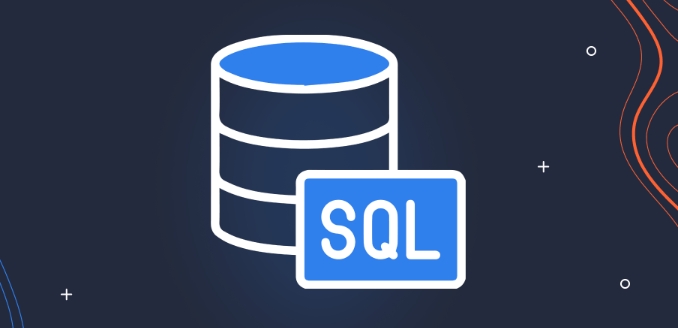Real-time decisions are inseparable from SQL because decisions are made wherever the data is. SQL, as a tool for directly manipulating data, is irreplaceable in real-time data processing and instant insights. Specifically reflected in: 1. Real-time query: Filter the latest records through WHERE conditions, combine index optimization performance, and quickly obtain the current data status; 2. Streaming aggregation: Use the streaming SQL engine to realize calculations at the same time, such as Flink SQL processing of continuous inflow data, and use sliding window to count real-time indicators; 3. Decision rules embed SQL: write fixed rules directly into SQL statements, such as user tag updates, and automatically executes with event triggering mechanisms; 4. Performance tuning: including reasonable index building, reducing JOIN, careful use of OFFSET, controlling return fields, etc., to ensure that SQL execution efficiency meets real-time needs.

Why is real-time decision-making inseparable from SQL? Because where the data is, the decision is where it is. Nowadays, many business scenarios need to quickly respond to user behavior, system status or market changes. At this time, simply relying on reports or historical analysis is not enough. As a tool for directly manipulating data, SQL plays an irreplaceable role in real-time data processing and instant insights.

Let’s take a look at how SQL supports real-time decision-making from several practical perspectives.
Real-time query: Get the current data quickly and accurately
The first step in real-time decision-making is to quickly obtain the current data state. For example, if an e-commerce system wants to know how much inventory a certain product has, or if a customer service system wants to see the user's latest order time, it needs to use real-time SQL query.

Common practices are:
- Use
WHEREconditions to filter out the latest records (such ascreated_at > NOW() - INTERVAL '5 minutes') - Optimize query performance with index
- Select the appropriate database node in the read-write separation architecture to avoid affecting the performance of the main library
This type of query requires high latency, but the logic is usually not complicated. The key is to have clear structure, clear fields, and hit indexes, otherwise even a few seconds of delay may turn "real-time" into "past".

Streaming aggregation: calculate while doing it, use while doing it
In some scenarios, data continues to flow in, such as user click flow, sensor data, transaction logs, etc. At this time, you can use SQL engines that support streaming computing (such as Apache Flink SQL or materialized views of ClickHouse) to achieve "computing at the same time".
For example, if you want to know the order volume of each city in the past minute, you can write a sentence like this:
SELECT city, COUNT(*) AS orders_last_minute FROM orders_stream WHERE event_time > NOW() - INTERVAL '1 minute' GROUP BY city;
The key points of this model are:
- Set a reasonable window time (such as sliding window or scroll window)
- If the data source is streaming (Kafka, Pulsar, etc.)
- The result is best to be updated or added, which is convenient for downstream consumption.
Although it still looks like SQL, the technology stack behind it is no longer the same as a traditional database and requires special engine support.
Embed decision rules into SQL: prefix judgment logic
Many real-time decisions actually have fixed rules, such as "the user logs in for three consecutive days and puts an active tag" and "the risk control inspection will be triggered if the order amount exceeds 1,000 yuan." If these rules are written in code to make logical judgments, the maintenance cost will be very high, but if expressed in SQL, they can be managed and executed more intuitively.
For example, you can write this:
UPDATE users SET user_type = 'high_value' WHERE total_spent > 10000 AND last_login > NOW() - INTERVAL '30 days';
This mode is suitable for combining timed tasks or event triggering mechanisms to automatically update user status, risk level and other information, providing a basis for subsequent recommendations, reminders, interception and other operations.
Performance Tutorial: Don't Make SQL a Bottleneck
In real-time scenarios, SQL execution efficiency directly affects the user experience. Here are a few practical suggestions:
- Reasonable index creation : especially fields that are often used for filtering and sorting
- Reduce JOIN operations : especially between large data tables, try to aggregate or redundant fields as early as possible
- Use OFFSET with caution : under large data volume, it will cause performance drops, and you can use cursor instead.
- Control return field : only the necessary fields are taken to reduce network transmission burden
- Precompiled statements or cached results : helpful for repetitive queries
These details look inconspicuous, but in scenarios with high concurrency and fast response, one millisecond difference may be a difference in success or failure.
Basically that's it. SQL is not just about checking data, it can become an important weapon for you to make real-time decisions. As long as the structure is designed properly, the logic is clear, and the appropriate execution environment can help you make quick and accurate judgments at critical moments.
The above is the detailed content of SQL for Real-time Decision Making. For more information, please follow other related articles on the PHP Chinese website!

Hot AI Tools

Undress AI Tool
Undress images for free

Undresser.AI Undress
AI-powered app for creating realistic nude photos

AI Clothes Remover
Online AI tool for removing clothes from photos.

Clothoff.io
AI clothes remover

Video Face Swap
Swap faces in any video effortlessly with our completely free AI face swap tool!

Hot Article

Hot Tools

Notepad++7.3.1
Easy-to-use and free code editor

SublimeText3 Chinese version
Chinese version, very easy to use

Zend Studio 13.0.1
Powerful PHP integrated development environment

Dreamweaver CS6
Visual web development tools

SublimeText3 Mac version
God-level code editing software (SublimeText3)

Hot Topics
 The Purpose of SQL: Interacting with MySQL Databases
Apr 18, 2025 am 12:12 AM
The Purpose of SQL: Interacting with MySQL Databases
Apr 18, 2025 am 12:12 AM
SQL is used to interact with MySQL database to realize data addition, deletion, modification, inspection and database design. 1) SQL performs data operations through SELECT, INSERT, UPDATE, DELETE statements; 2) Use CREATE, ALTER, DROP statements for database design and management; 3) Complex queries and data analysis are implemented through SQL to improve business decision-making efficiency.
 How to use AWS Glue crawler with Amazon Athena
Apr 09, 2025 pm 03:09 PM
How to use AWS Glue crawler with Amazon Athena
Apr 09, 2025 pm 03:09 PM
As a data professional, you need to process large amounts of data from various sources. This can pose challenges to data management and analysis. Fortunately, two AWS services can help: AWS Glue and Amazon Athena.
 MySQL and SQL: Essential Skills for Developers
Apr 10, 2025 am 09:30 AM
MySQL and SQL: Essential Skills for Developers
Apr 10, 2025 am 09:30 AM
MySQL and SQL are essential skills for developers. 1.MySQL is an open source relational database management system, and SQL is the standard language used to manage and operate databases. 2.MySQL supports multiple storage engines through efficient data storage and retrieval functions, and SQL completes complex data operations through simple statements. 3. Examples of usage include basic queries and advanced queries, such as filtering and sorting by condition. 4. Common errors include syntax errors and performance issues, which can be optimized by checking SQL statements and using EXPLAIN commands. 5. Performance optimization techniques include using indexes, avoiding full table scanning, optimizing JOIN operations and improving code readability.
 MySQL: A Practical Application of SQL
May 08, 2025 am 12:12 AM
MySQL: A Practical Application of SQL
May 08, 2025 am 12:12 AM
MySQL is popular because of its excellent performance and ease of use and maintenance. 1. Create database and tables: Use the CREATEDATABASE and CREATETABLE commands. 2. Insert and query data: operate data through INSERTINTO and SELECT statements. 3. Optimize query: Use indexes and EXPLAIN statements to improve performance.
 SQL vs. MySQL: Clarifying the Relationship Between the Two
Apr 24, 2025 am 12:02 AM
SQL vs. MySQL: Clarifying the Relationship Between the Two
Apr 24, 2025 am 12:02 AM
SQL is a standard language for managing relational databases, while MySQL is a database management system that uses SQL. SQL defines ways to interact with a database, including CRUD operations, while MySQL implements the SQL standard and provides additional features such as stored procedures and triggers.
 SQL: The Language, MySQL: The Database Management System
Apr 21, 2025 am 12:05 AM
SQL: The Language, MySQL: The Database Management System
Apr 21, 2025 am 12:05 AM
The relationship between SQL and MySQL is: SQL is a language used to manage and operate databases, while MySQL is a database management system that supports SQL. 1.SQL allows CRUD operations and advanced queries of data. 2.MySQL provides indexing, transactions and locking mechanisms to improve performance and security. 3. Optimizing MySQL performance requires attention to query optimization, database design and monitoring and maintenance.
 SQL and phpMyAdmin: A Beginner's Guide
Apr 16, 2025 am 12:02 AM
SQL and phpMyAdmin: A Beginner's Guide
Apr 16, 2025 am 12:02 AM
Beginners can learn SQL and phpMyAdmin from scratch. 1) Create database and tables: Create a new database in phpMyAdmin and create tables using SQL commands. 2) Execute basic query: Use SELECT statement to query data from the table. 3) Optimization and best practices: Create indexes, avoid SELECT*, use transactions, and regularly back up databases.
 SQL and MySQL: Understanding the Relationship
Apr 16, 2025 am 12:14 AM
SQL and MySQL: Understanding the Relationship
Apr 16, 2025 am 12:14 AM
The relationship between SQL and MySQL is the relationship between standard languages ??and specific implementations. 1.SQL is a standard language used to manage and operate relational databases, allowing data addition, deletion, modification and query. 2.MySQL is a specific database management system that uses SQL as its operating language and provides efficient data storage and management.






